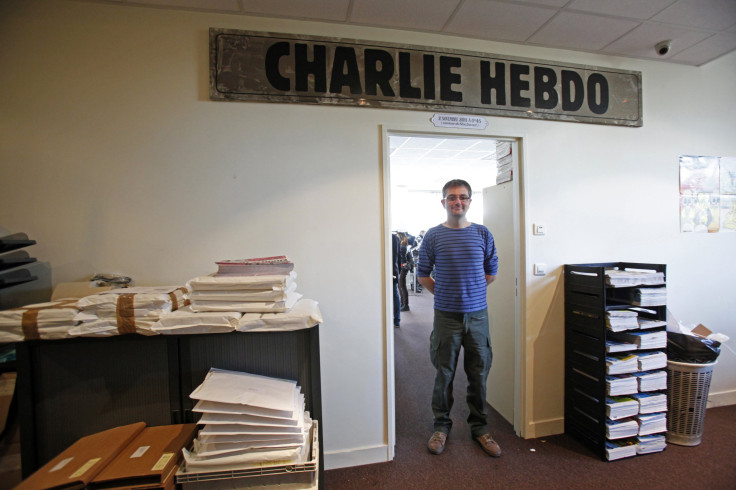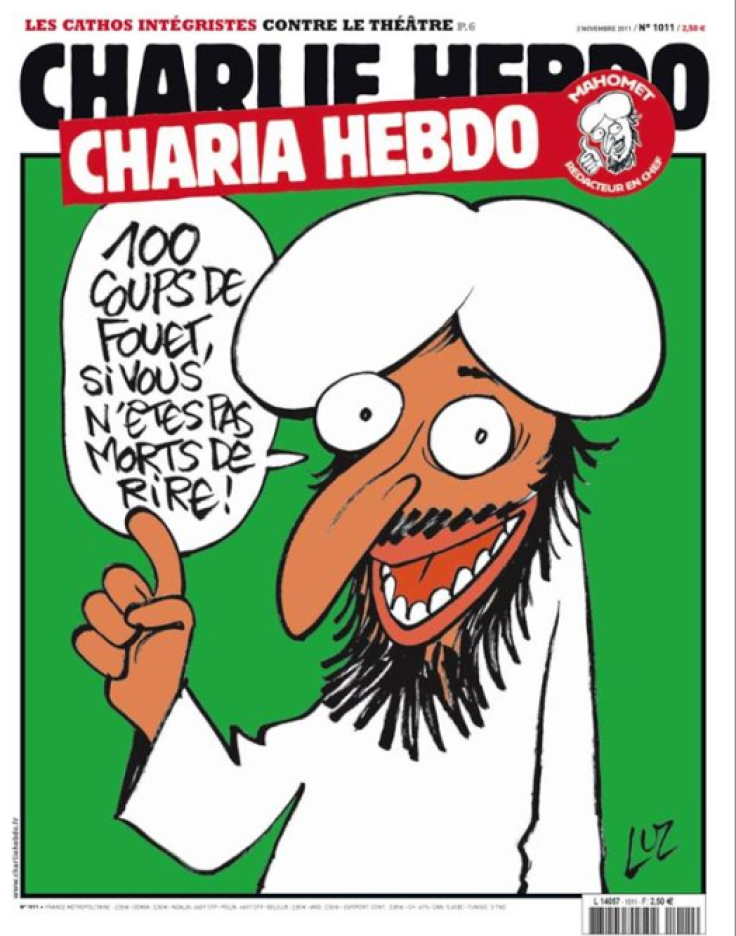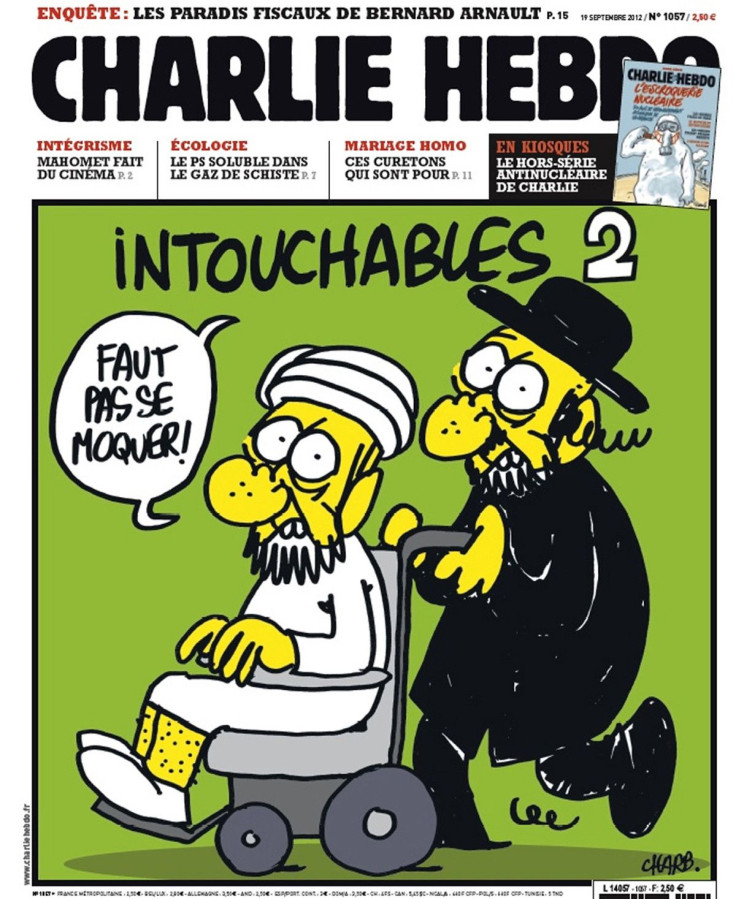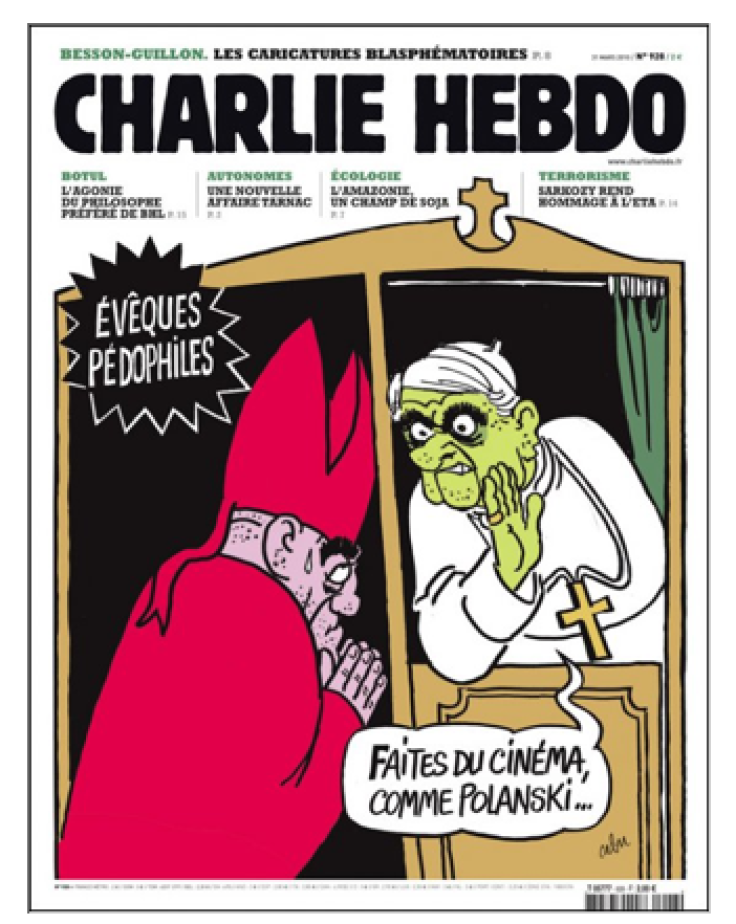Charlie Hebdo's Most Controversial Covers: French Satirical Magazine Was An Equal-Opportunity Offender

When masked gunmen with assault rifles killed at least 12 people Wednesday in Paris in the offices of satirical weekly newspaper Charlie Hebdo, all eyes were on al Qaeda, which had added the magazine's editor, Stéphane "Charb" Charbonnier, to its hit list in 2009 for covers depicting the Prophet Muhammad.
But the magazine, launched in 1969, has been an equal-opportunity offender, skewering celebrities, the French police, and Catholic and Jewish as well as Muslim figures. "Above all," Charbonnier, the editor since 2009, told Reuters in 2012, "it is a secular and atheist newspaper."
In other words, the publication's enemies could include politicians, extremist nationalist groups and non-Muslim religious groups.
Charlie Hebdo's New Year's Eve cover showed French President François Hollande being humped by a dog, and on Dec. 20, it published a cartoon of the Virgin Mary giving birth to a pig-nosed Jesus, reported NBC.
"Police would be shown holding the dripping heads of immigrants; there would be masturbating nuns, popes wearing condoms — anything to make a point," reports the BBC.
With the news of Michael Jackson’s death in 2009, Charlie Hebdo's cover featured him as a skeleton wearing a black wig, with the caption “Michael Jackson est enfin blanc" ("Michael Jackson is finally white"), referencing controversial rumors that the pop superstar had been bleaching his skin.

In November 2011, the Charlie Hebdo offices were firebombed and destroyed after the magazine published an issue "guest-edited" by the Prophet Muhammad that it renamed "Charia Hebdo," referring to Shariah law, reported the Guardian. The cover depicted a caricatured Muhammad, whose pictorial representation is considered blasphemous by certain religious Muslims, with a caption that warned of getting “a hundred lashes if you don’t die laughing.”
In response to the firebombing, Loonwatch, in an article entitled "The Politics of Provocation: What the Firebombing of Charlie Hebdo Magazine Means," argued that the proper response to the images of "the cartoonish hook-nosed-goofy-smirking-Ayrab-Mooslim with some weird-looking turban on his head" would be "to peacefully protest, or to satirize the Charlie Hebdo publication, or to do as most have done and simply ignore it."
The self-described "journal irresponsable" (irresponsible magazine) came back from the firebombing unchastened and undeterred, with a follow-up issue featuring a cartoon of a man in traditional Muslim garb kissing a man wearing a Charlie Hebdo T-shirt, captioned “L’Amour plus fort que la haine” (“Love is stronger than hate”).
In a September 2012 issue, Charlie Hebdo's cover showed a cartoon of the Prophet Muhammad naked bent over exposing his genitals and with a star only partially covering his buttocks, with the caption “Mahomet: A Star Is Born.” Another cover featured the figure of a man in traditional Muslim garb pushed in a wheelchair by a figure in traditional Hassidic Jewish garb, with caricatured features.

Jewish and Muslim figures were not Charlie Hebdo’s only religious targets. Among the many anti-Catholic images it featured, often taking on the church for its cover-up of pedophilia scandals, one of the most eye-poppingly lewd covers depicted a cartoon of God being sodomized by Jesus who is receiving, as one publication put it, “a special anointing by the Holy Spirit.” It was in response to the Catholic church’s official stance on gay marriage. French blog Aufeminin quoted journalist Vivien Hoch describing the cover as “secularized blasphemy,” and adding that “Christianophobia doesn’t pay.”
The blog Islamophobia Today, responded critically to the covers depicting the religious figure Mohammad while respecting Charlie Hebdo's right to do so in a post called "Free speech or mindless opportunism?"
The Charlie Hebdo murders have been condemned worldwide, and Twitter support has come in the form of a hashtag: #JeSuisCharlie (I am Charlie).
The search for the assassins continues in Paris.

.
© Copyright IBTimes 2024. All rights reserved.












